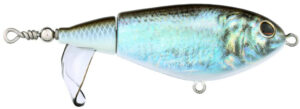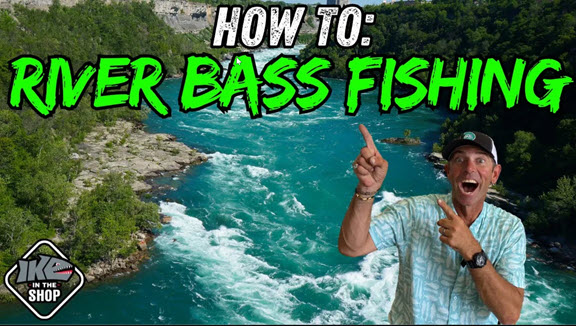Today we’re doing something a little different, we’re talking theory. That’s right, instead of just showing you a bait or technique, we’re going to break down how to catch bass in rivers. And listen, this isn’t just about one place or one season. Whether you’re fishing a big natural river, a tidal river, or the headwaters of a reservoir, these principles apply across the board.
The Power of Current
If you take away just one thing from this blog, remember this: current is the heartbeat of a river. Bass live by it. They eat by it. Their whole world revolves around current because that’s what delivers food to them. And when I say bass, I mean all of them largemouth, smallmouth, spotted bass, even those special ones like shoal bass and Suwannee bass.
Here’s the universal rule: bass will always set up around something that breaks the current. That could be a giant boulder, the tip of an island, a log, or even just a subtle point of land. When current smashes into something, it creates a seam, which is a line where fast water meets slow water. On one side, you’ve got heavy flow. On the other side, you’ve got a calm pocket or eddy. Bass position right there, tucked out of the current but ready to dart into the flow when food comes by.
For these current seams, one of my favorite baits is a ½ oz ChatterBait. I’ll often pair it with a Berkley Power Swimmer trailer in a Bluegill or Green Pumpkin color. That combo lets me fish the seam naturally, ticking rocks and wood, while giving off flash and vibration that river bass can’t resist.

Don’t just fish the obvious slack water, though. Pay attention to the tricky spots too like the backflow where current sucks around behind a rock or point, that can be a goldmine. And here’s one that took me years to figure out: the actual front side of the object. It looks too fast to hold fish, but right where the current hits, there’s often a little soft spot. A tube bait dragged right in that push water will often surprise you with a big smallmouth. Moral of the story: if you see something breaking current, fish every angle of it.
Rising vs. Falling Water
The second universal rule of river fishing is tied to water levels. No matter if you’re dealing with rain in a natural river, tides in a tidal system, or dam releases in a reservoir, the river is always rising or falling. And guess what? The bass respond to that movement instantly.
When water rises, bass move shallow. They push into new cover, slide up onto banks, and take advantage of flooded grass or brush. Some of the biggest river bass I’ve caught have been on a rising river. They feel that new water and rush in to feed. That’s when I love throwing a Berkley Choppo Topwater or a walking bait up tight to the bank. Those flooded bushes and grass edges are prime spots to walk a bait and draw explosive strikes.

When water falls, it’s the opposite. Bass abandon the shallows quickly. They don’t want to get left high and dry, and neither do the baitfish. So falling water pulls everything back out toward the middle of the river. That’s when you need to focus on main river structure: mid-river boulders, offshore logs, ledges, and anything that sits in deeper current. A crankbait in a craw or shad pattern is perfect here, crashing into rocks and triggering bites as bass reposition out in the main flow.
Presentation: Always Fish Upstream
The last piece of the puzzle is how you present your bait. This one is big, and it’s something a lot of anglers overlook. In a river, I always want my lure moving with the current, not against it.
Think about it. Forage like minnows, crayfish, and bluegill aren’t out there swimming upstream into the heavy current. They’re drifting, fluttering, and swimming with the flow. So if I cast downstream and reel back up, it looks totally unnatural. Instead, I position myself so I can cast upstream and let my bait drift back naturally.
It doesn’t matter if I’m throwing a Yamamoto Senko weightless into an eddy, a ChatterBait across a seam, or a crankbait down a ledge—my goal is the same. Cast upstream, let the current do the work, and make that lure look like an easy meal washing down to a waiting bass. Trust me, this one simple adjustment can double your bites.
Wrapping It Up
So let’s recap. River fishing boils down to three universal truths: bass use current breaks to feed, rising water pushes fish shallow while falling water pulls them out, and you should always present your bait moving with the current.
That’s the beauty of fishing rivers, it’s dynamic, it’s always changing, but the fundamentals stay the same. And once you figure out how to read the current, water levels, and presentation, you’ll unlock some of the best bass fishing of your life.
______________________________________________________________________________

Follow Ike on Facebook, Instagram, X and TikTok for fishing and fun content. Subscribe to Mike’s YouTube channel for access to his educational ‘Ike in the Shop’ videos and his ‘Going Ike’ Adventure series!
For more great Ike Gear, check out Ike’s Tackle Box here
















